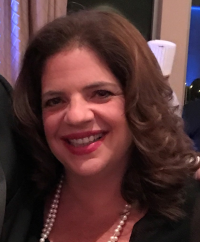Elisa Shipon-Blum, D.O.

President and Director, Selective Mutism Anxiety Research and Treatment Center (SMart Center); Director, Selective Mutism Research Institute (SMRI); Founder, Selective Mutism Association; Clinical Assistant Professor, Family Medicine and Psychology, PCOM
Social Communication Anxiety Therapy® (S-CAT®) is the evidenced-based treatment developed by Dr. Elisa Shipon-Blum and implemented at the Selective Mutism Anxiety Research and Treatment Center (SMart Center) www.SelectiveMutismCenter.org
S-CAT® is based on the concept that Selective Mutism is more than just not speaking. Children suffering from Selective Mutism (SELECTIVE MUTISM) suffer from a social communication anxiety disorder and may have difficulty socially engaging, communicating nonverbally and many cannot communicate at all when feeling anxious or uncomfortable. Depending on the setting and individuals present in a setting will dictate a child’s social and communication level. Therefore, although mutism is the most noted symptom, it merely touches on the surface of our children.
According to Dr. Shipon-Blum’s work, after a complete evaluation, treatment needs to address three key questions. WHY did a child develop SM? Why is Selective Mutism continuing and WHAT can be done at home, the real world and within school to help the child build the coping skills and overcome their social communication challenges? Once this is determined, determining where the child is in terms of Stages of Social Communication on the Social Communication Bridge® treatment strategies for home, school and the Real World can be developed.
S-CAT® focuses on the whole child and incorporates a TEAM approach involving the child, parent, school personnel and treating professional.
Dr. Shipon-Blum emphasizes that although anxiety lowering is key it is often NOT enough, especially as children age. Over time, many children with Selective Mutism no longer feel ‘anxious’ but mutism and often lack of proper social engagement continues to exist in select settings. Many children with SM need strategies/interventions to progress from nonverbal to spoken communication.
S-CAT® incorporates anxiety lowering techniques, methods to build self-esteem and strategies/interventions to help with social comfort and communication progression, such as ‘Bridging’ from shut down to spoken communication, Verbal Intermediaries® and for some, utilizing the Ritual Sound Approach® etc.
The KEY concept that children with SM need to understand, feel in control and have choice in their treatment (age dependent) are a critical component of SCAT.
Silent goals (environmental changes) and active goals (child directed goals) are used to help the child build the social comfort that must proceed before communication progression.
Every child is different and therefore an individualized treatment plan needs to be developed that incorporates HOME (parent education, environmental changes), Addressing the child’s unique needs and SCHOOL (teacher education, accommodations/interventions).
Therefore, by lowering anxiety, increasing self-esteem as well as increasing communication and social confidence within a variety of REAL WORLD settings, the child suffering in silence will develop necessary coping skills to enable for proper social, emotional and academic functioning.
Dr. Shipon-Blum earned her medical degree at the Philadelphia College of Osteopathic Medicine.
Dr. Elisa Shipon-Blum
Selective Mutism Anxiety Research and Treatment Center (SMart Center)
505 Old York Road, Lower Level
Jenkintown, Pennsylvania 19046
215-887-5748
SMartCenter@SelectiveMutismCenter.org (preferred contact)
www.SelectiveMutismCenter.org
www.SelectiveMutismResearch.org
www.CommuniCamp.org



